How long does concrete contact dry?
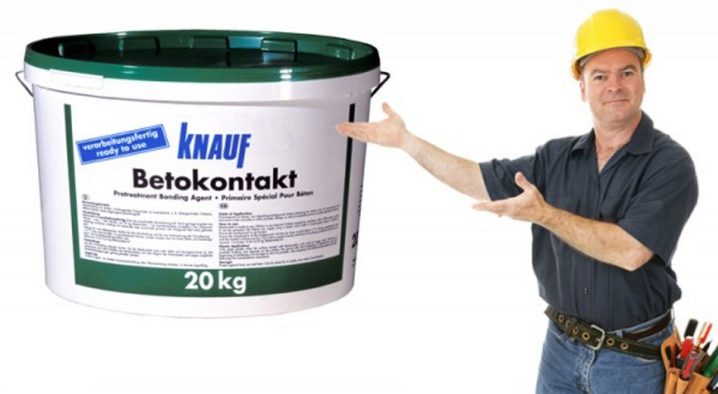
Currently, there is an excellent tool that promotes the adhesion of a wide variety of materials (even glass and ceramics). Concrete contact primer is the most popular among consumers. There are no analogues of these products on the modern market. This mixture dries out quite quickly, but only if it is used correctly.
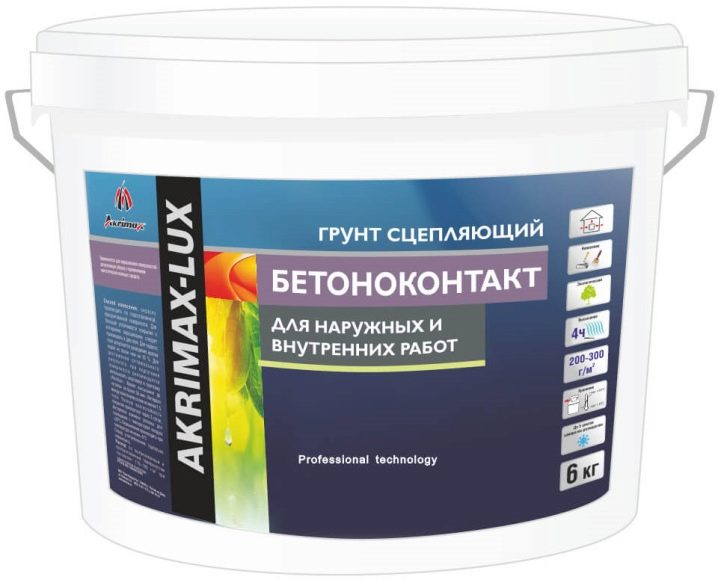
What it is?
The special composition of the loafcontact includes acrylic with the addition of glue and cement. This primer will help transform a slightly roughened or smooth surface into an emery sheet. Such an interesting effect is created by quartz sand in the form of small grains. Decorative materials do not hold well on a smooth surface, therefore, the use of concrete contact allows you to prepare the surface with the highest quality.
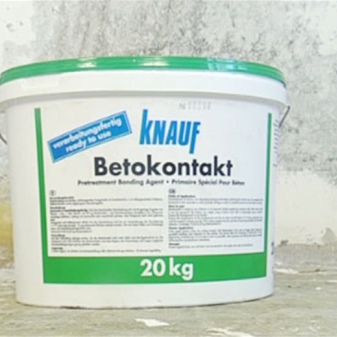

The composition is applied when preparing walls for tiles, plaster and many other decorative materials. The concrete contact replaces the bandage, which was previously used to avoid shedding the plaster. But the bandage is a laborious and complicated process, and anyone can handle the primer.
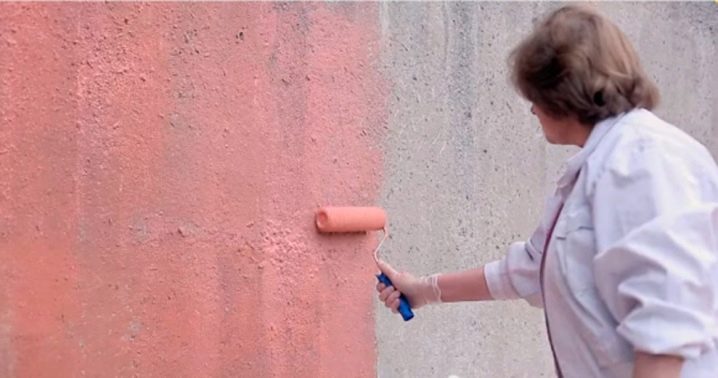
Features and Benefits
Consider the distinctive characteristics and qualities of the concrete contact primer, which make it indispensable in finishing work:
- The product can be used on the ceiling, on the floor and even on the walls. The primer increases the grip so that it can hold the facing material upright.
- The material dries quickly. When dry, no unpleasant odor appears, no harmful substances get into the air. The speed of the process directly depends on the correctness of the work and the microclimate of the room.
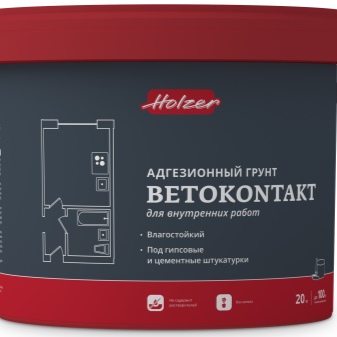
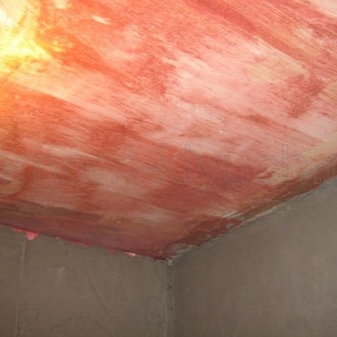
- The concrete contact is moisture resistant. The product can be used as a waterproofing agent.
- Manufacturers are pleased with the life of the primer. If the instructions are followed, the primer will last up to 80 years.
- The presence of pigment in the composition of the primer allows you to cover the surface as closely as possible. Thanks to the visible color, you will immediately notice the missing spots.
- The concrete contact mixture resembles sour cream in its consistency. Thanks to this, the product can be easily applied to the surface with the help of a convenient tool.
- The mixture can be used not only by experienced craftsmen, but also by beginners. There is nothing difficult to use, you do not need to have special skills.
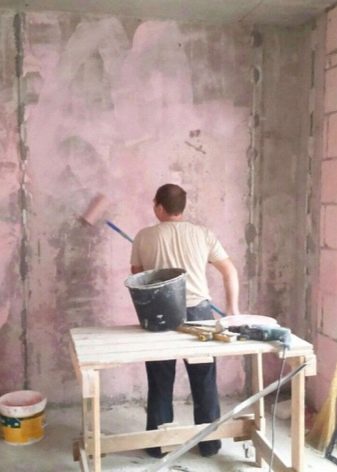
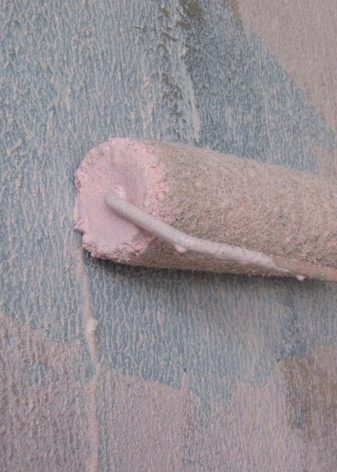
Subtleties of application
All concrete contact manufacturers write a short instruction on the packaging. Be sure to read it before starting work. The use of a primer solution does not require special skills and abilities. When reading the manufacturer's recommendations, pay particular attention to the temperature range. Too high and low temperature values of air not only harm the composition, but completely render it unusable. Overcooling and overheating reduce the adhesion properties by several times.
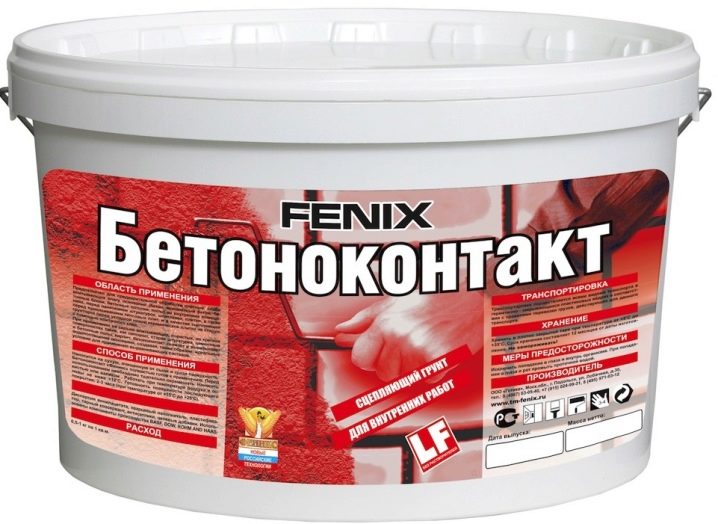
Concrete contact is more often found on sale ready-made. You can start treating walls, floors or ceilings as soon as you return from the store. Before starting, you should still mix the contents of the bucket thoroughly. Visually, this primer resembles a pastel paint with small solid blotches. Before starting priming work, make sure that the room is warm enough (more than +15 degrees).
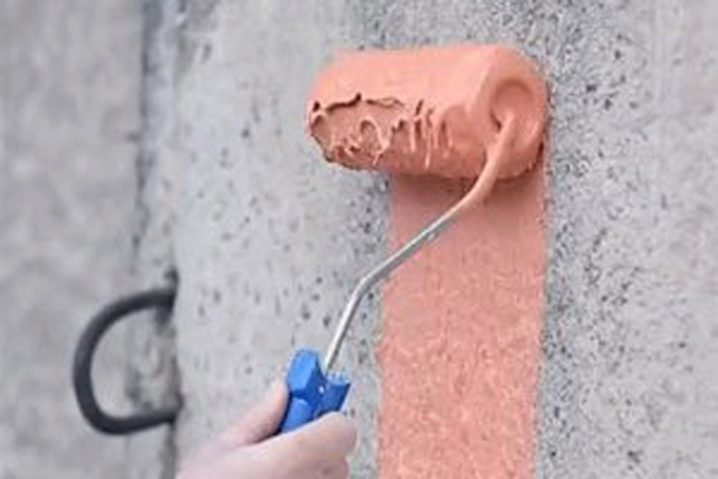
It is categorically impossible to apply the composition to frozen walls. Low temperature prevents adhesion of the compound to the surface.After decorative treatment, the primer will simply fall off the wall under the influence of the heavy material. If there is a wiring in the wall, then be sure to de-energize the room before starting work. Otherwise, the surface can absorb moisture and act as a conductor of electricity.
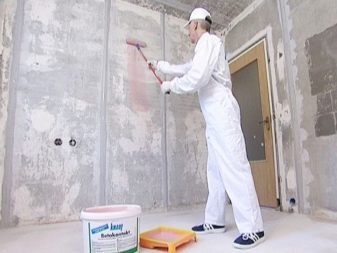
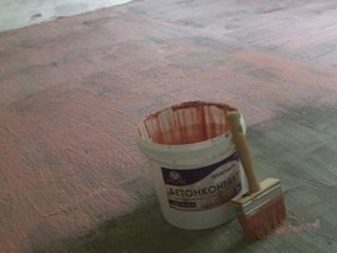
To apply the primer composition use:
- wide brush;
- wide and narrow spatulas;
- paint roller.

A wide brush helps to minimize material consumption, and on the contrary, a lot of composition remains on the roller. Apply concrete contact in an even layer over the entire surface of the substrate. If you are working on a surface that will absorb liquid, it is best to apply the primer in two coats. You will also have to reapply the solution if the base has serious defects and intricate relief.
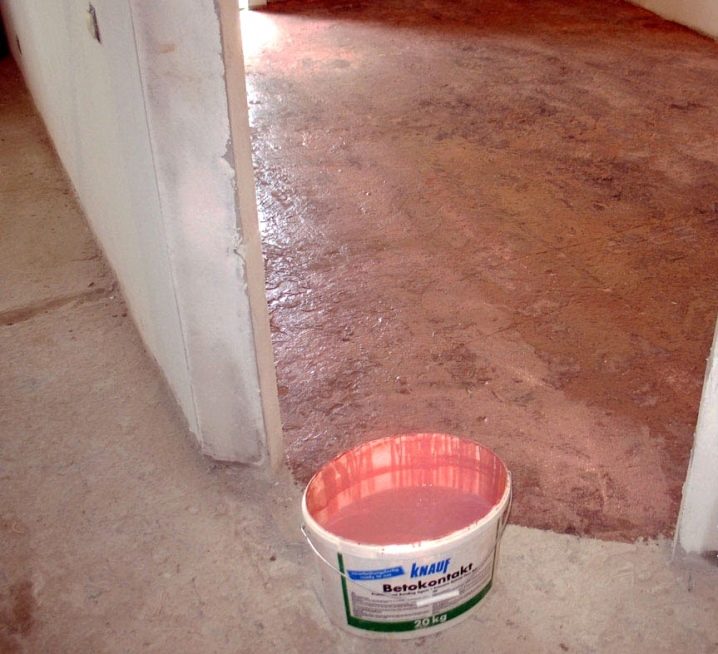
Sometimes it makes sense to slightly dilute the primer mixture. To do this, add 50 ml of water to 1 kg of the product. The water should be at the same temperature as the room air temperature.
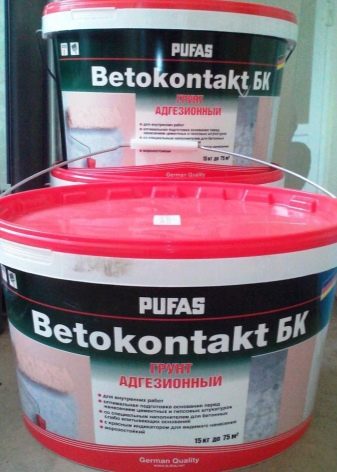
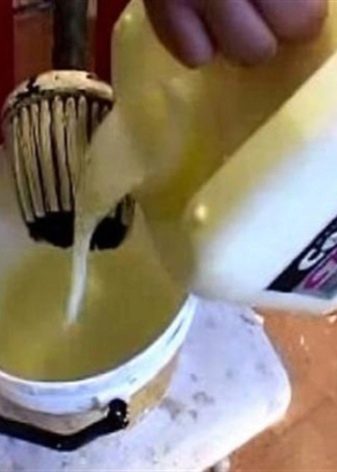
How long does it dry?
Concrete contact should be applied to those materials that do not absorb moisture well or do not absorb it at all. So, the primer is used for processing wood, metal, tiles, concrete and even for painted surfaces. The drying time of the soil depends on the level of humidity in the room.
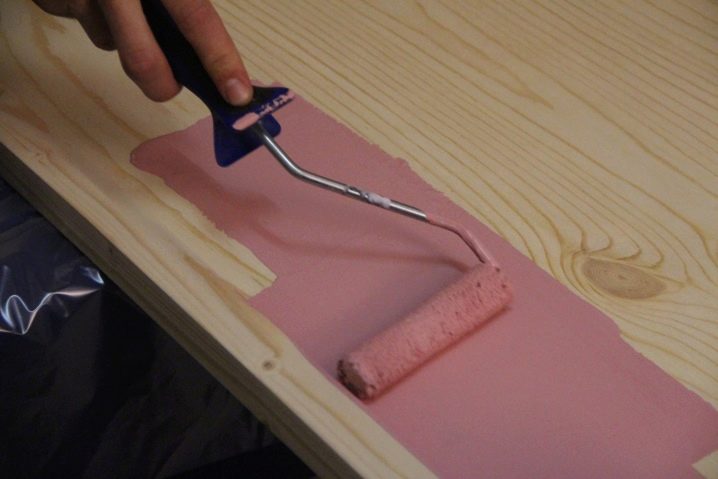
The standard time for complete drying is 2.5-4 hours. Better withstand the maximum time - haste will destroy the positive properties of concrete contact. Experts recommend applying the mixture to the walls in the evening, and starting finishing work in the morning. The dried surface attracts dust, so you shouldn't wait too long. The fresh air flow will draw excess moisture from the room. If this is not possible, then leave the material to dry for 24 hours.
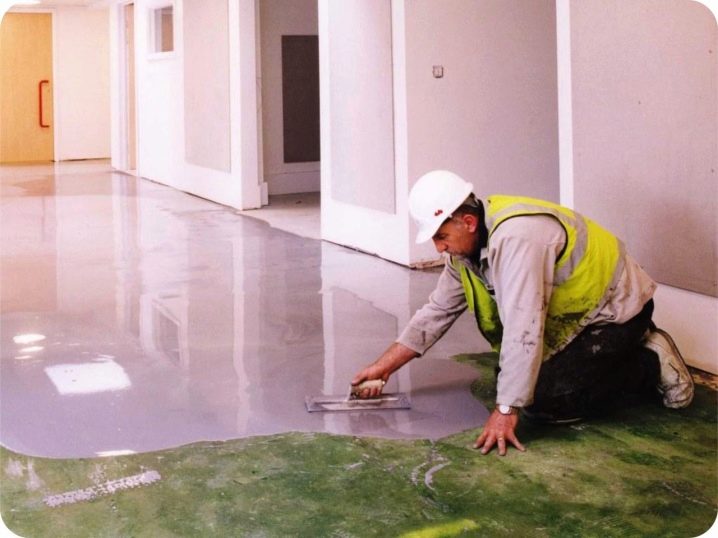
There are times when there is simply no way to wait all the necessary time for the primer layer to dry completely.
In this case, additional work will have to be done:
- cover the walls with a primer that penetrates deeply into the material;
- wait until it dries completely and start finishing work.
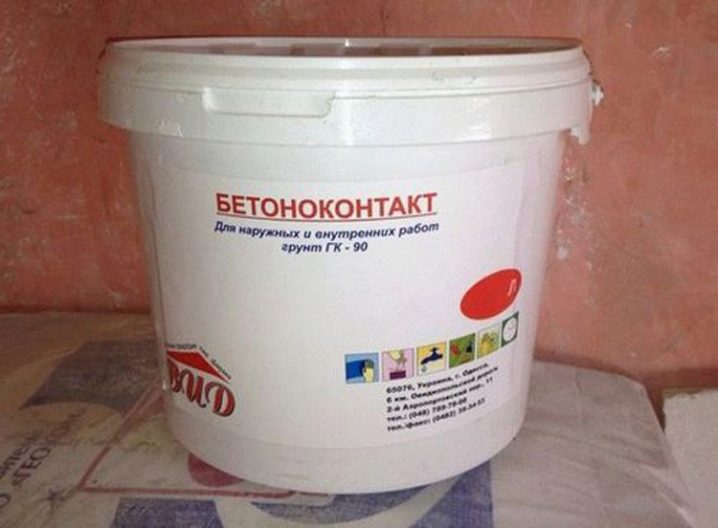
When can work continue?
Make sure that the concrete contact layer is completely dry. The surface finishing procedure can be continued immediately afterwards. If desired, it is possible to pause for drying a little longer, however, it is not recommended to drag out the work too much. Dust can settle on the primer, because of which all actions will have to be repeated.
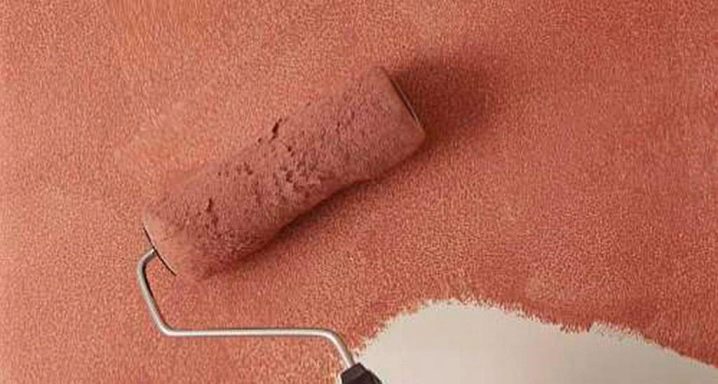
A little more about the use of concrete contact, see the video below.













The comment was sent successfully.